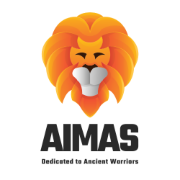I really like this martial arts data base website : http://www.mardb.com With courtesy and respect to this nice website I am sharing some of information I found on this website. If you wanna know more go to this website.
Kalarippayattu is a Dravidian martial art practiced in Kerala and contiguous parts of neighboring Tamil Nadu of Southern India. It incorporates strikes, kicks, grappling, martial dance, and weaponry, as well ashealing techniques.
Although its origin and growth are shrouded in mystery, the ancient ballads and-foreign accounts have left detailed notes on its practices and the physical culture it promoted. As an institution, the Kalari has greatly influenced the cultural life of Kerala society.
The villages of medieval Kerala had a kalari, a temple, and a public tank for bathing, – a rare combination of religion, hygiene, public health and defense. Although the Kalari system was an offshoot from the Hindu way of life, it was shared by all people, irrespective of caste and religion, as a common legacy.
Kalaripayattu is the oldest existing martial art form, dating back more than 2000 years and said to be theforerunner of popularly known Chinese martial arts, as the Buddhist monk Bodhidharma took this knowledge from India to China.
The practice of Kalaripayattu is said to originate from the Dhanur Vedic texts encompassing all fighting arts and described by the Vishnu Purana as one of the eighteen traditional branches of knowledge. Kalaris are the schools where training in this martial art form is imparted by Gurukals or masters.
The term Kalarippayattu is a tatpurusha compound formed from the words kalari meaning school or gymnasium and payattu derived from “payattuka meaning to fight or to exercise or to put hard work into.
When it is probable that the systems of martial practice assumed a structure and style akin those extant today.
Belying the assumption that the compound itself might have an equally antique use as the singular kalari and payattu, the unpublished Malayalam Lexicon notes that the earliest use of the compound, Kalarippayattu is in Ulloor Parameswaram’s early twentieth century drama, Amba.
Although M.D. Raghavan suggested that Kalari was derived from the Sanskrit khalūrikā, Burrow has alternatively suggested that khalūrikā (“parade ground, arena”) and its Sanskrit root, khala- (“threshing floor”) are Dravidian loan words.
This martial art form is indigenous to the Southern Indian state of Kerala which, legend has it, was created by the warrior saint Parasurama, an incarnation of Lord Vishnu, by throwing his axe into the sea which receded till the point where it fell. Parasurama then established forty-two kalaris and taught twenty-one masters of these kalaris to protect the land he created.
Kalaripayattu is a traditional psycho-physiological discipline emanating from Kerala’s unique mytho-historical heritage as well as a scientific system of physical culture training. The historical antecedents of this martial art form combines indigenous Dravidian systems of martial practice such as ‘varma ati’ or ‘marma adi’ with an influence of Aryan brahman culture which migrated southwards down the west coast of India into Kerala. There are two distinct traditions in Kalaripayattu—the Northern and the Southern schools.





No comments:
Post a Comment